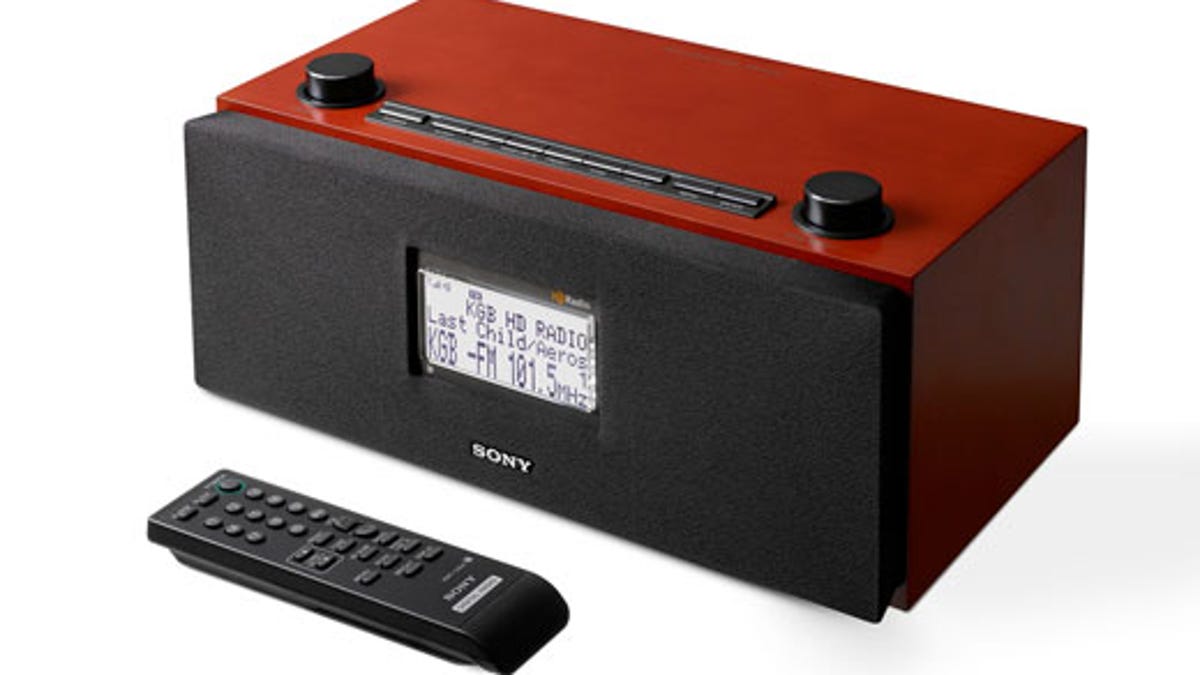Listen to HD Radio--without buying any new hardware
Many of the "exclusive" HD Radio stations are available as free online radio streams over the Web.

Sony just sent me the
HD Radio's extra stations
For me, the supposed increase in sound quality just isn't that much of a selling point--you're just hearing those same lame Clear Channel playlists, albeit on a digital rather than an analog band. But the multicast (or HD2) stations are a different story. They're substations that offer alternative programming that's unavailable on the analog dial. For instance, New York's WPLJ offers adult contemporary music on its main station (analog and digital), but has two multicast stations--95.5-2 and 95.5-3--that play '70s and '80s music only, respectively. And because the industry is trying to hook people on HD Radio, these HD2 stations--for the time being, anyway--often broadcast free of commercials.
OK, now we're getting somewhere: there's some exclusive content dispersed throughout the HD Radio dial, so maybe it's got some value after all. But then I remembered something. When Tivoli Audio announced its two new NetWorksGo Wi-Fi radios last June, CEO Tom DeVesto defended their lack of HD Radio reception by saying that it was essentially superfluous: most of the multicast HD2 stations would still be available, just via Internet streaming instead of over the air. So I decided to put DeVesto's claim to the test.
Many HD2 stations are available online
I searched for local stations so I could compare the online sound to the over-the-air versions. Out of 11 original multicast HD2 radio stations available over the air in my home market (New York City), I was able to find 7 of them streaming online. Furthermore, I was able to receive a tenth station (WXRK-HD2) online that doesn't appear to be available on the airwaves yet. (Five additional HD2 stations listed don't yet appear to be on the air--or, at any rate, I couldn't pull them in on either of my HD Radios).
The stations I found are as follows; the genres are those listed on the HD Radio website. Note that the links may open various other Web pages and/or audio applications on your computer, depending upon how it's configured.
- 92.3-2 WXRK-HD2 (alternative): Web player
- 93.9-2 WNYC-HD2 (classical): ASX stream
- 100.3-2 WHTZ-HD2 (new CHR/new top 40): ASX stream
- 101.1-2 WCBS-HD2 (oldies): Web player
- 103.5-2 WKTU-HD2 (country): ASX stream
- 104.3-2 WAXQ-HD2 (deep cuts classic rock): Web player (via Radiotime.com)
- 105.1-2 WWPR-HD2 (Power Espanol): ASX stream
- 106.7-2 WLTW-HD2 (lite classics): ASX stream
How to find and listen to HD2 stations online
1. Determine which stations you want to look for online. All of the current (and even some future) HD radio stations can be found at hdradio.com. I searched for local stations so I could compare them to the over-the-air offerings, but the great thing about Web radio is that you're not limited to any geographical area: you can stream low-power local stations that you can't quite receive with your standard radio, or you can opt to pull in other stations from across the country or around the world.
2. Once you pull up a list of stations (for example, New York State), you need to search for their online equivalents. Remember, the primary (HD1) digital channel is always just a simulcast of the analog version--and most of them are already online (or, if local, available on any old radio). So it's worth seeking out any of those HD2 (and even the occasional HD3) stations, to see if they're paying anything of interest.
3. Search for the station (or stations) you've selected. Google is your best bet for starters, but I also found a few other resources worth trying (see below).
If the station is online, you'll find a link that will play in a browser or a software audio player. If the latter, you'll want to make sure you have a player that's flexible with Internet radio formats (asx, pls)--iTunes may work for some, Windows Media Player for others; Winamp is a great (and free) player for Windows. Note that many streams can also be played on compatible hardware devices, including the
And that's pretty much it. The downside of Web streaming is that you're usually limited to a low-bandwidth stream, and you need to be within range of a broadband network (i.e., it's no substitute for an HD Radio in the car). But those caveats are a lot easier to swallow when you're getting the music without spending any additional money.
Additional online radio resources
While searching for the HD2 stations, I stumbled across a variety of online radio sites that were particularly helpful:
- VTuner: main site | NY stations
- Radio Roku: main site | NY HD2 stations
- radiostationworld: main site | NY stations
There are plenty of other online radio sites, but these were the best for helping me locate specific HD2 stations. If anyone has any other suggestions, please leave them in the comments below.

